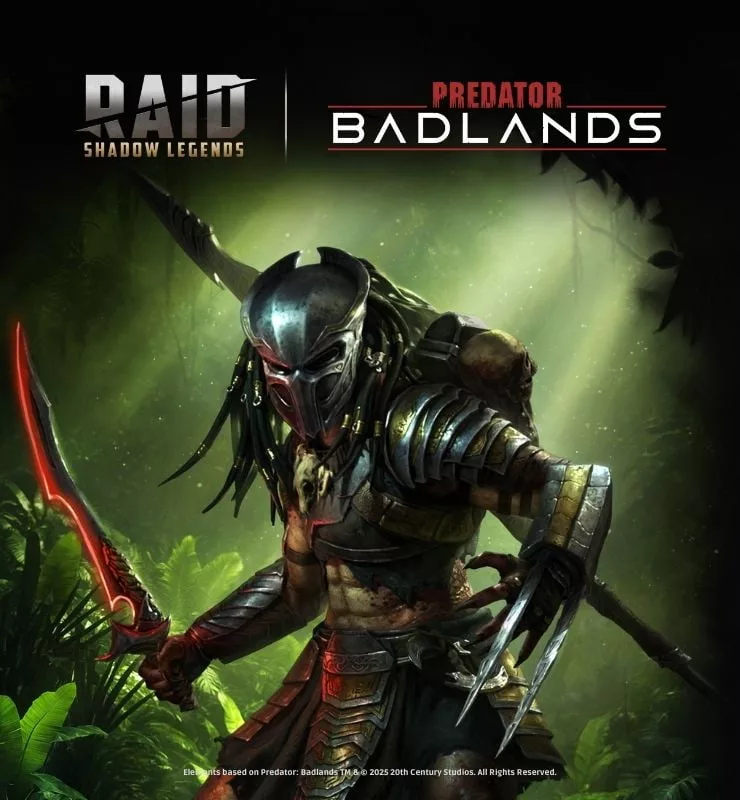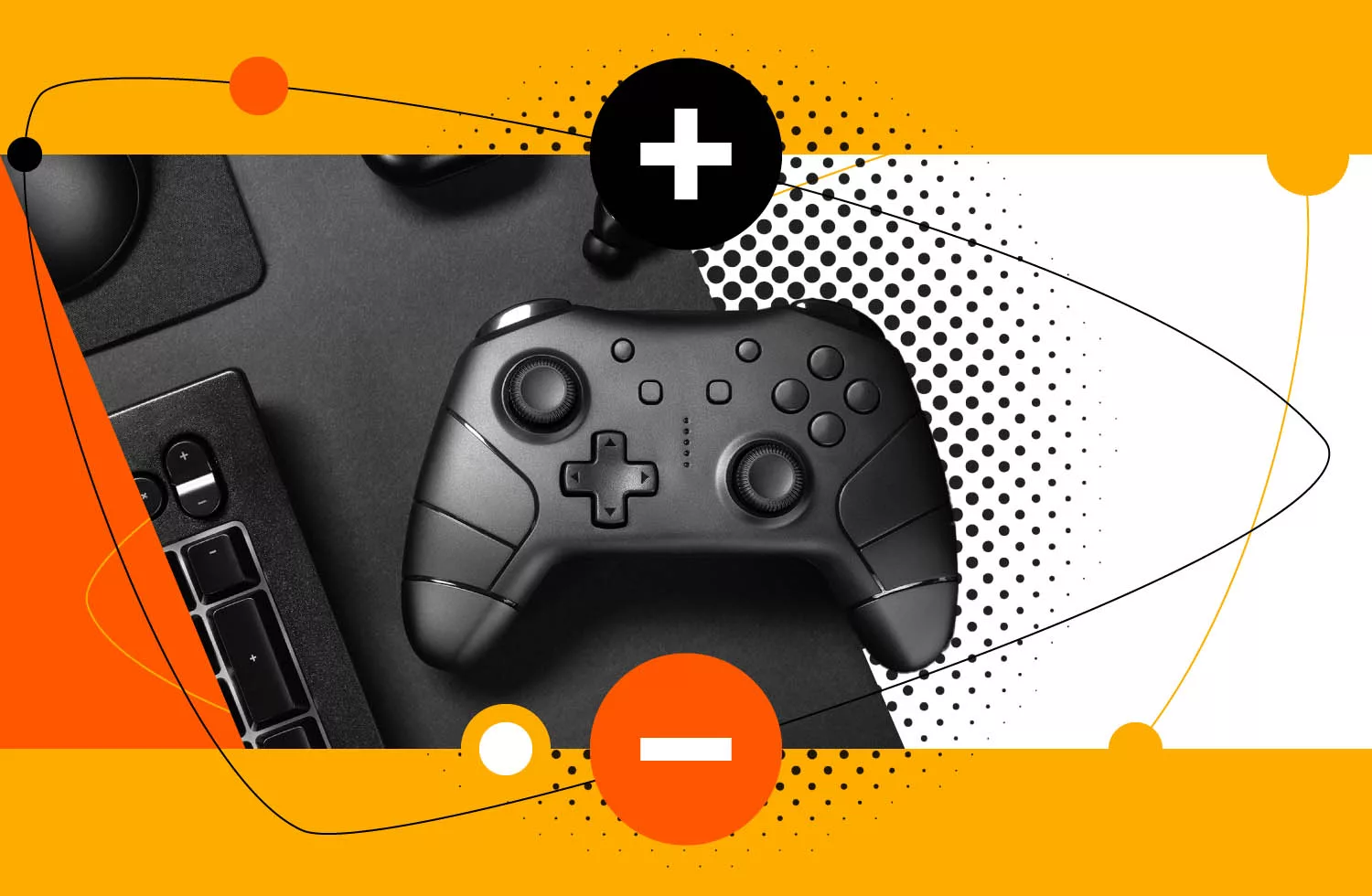
The gaming industry is booming, with global revenue forecasted to soar by an incredible $216.3 billion between 2024 and 2029 — a staggering 45.53% growth. Amid this explosive expansion, one trend stands out: the rising presence of female gamers who are reshaping the industry and breaking stereotypes.
In this post, we’ll uncover the statistics behind this shift, explore how gaming demographics have evolved, and discuss what these changes mean for the future of gaming.
What Percentage of Gamers Are Female?
Among all gamers, 45% are women and 55% are men, showing a growing balance between genders in the gaming world.
Key Gaming Statistics
The gaming industry is thriving, with impressive stats that showcase its massive global reach and influence. From player demographics to platform trends, these key figures highlight the evolving landscape of gaming in 2025:
- With approximately 2.6 billion gamers worldwide and gaming titles accessible on nearly every digital device, video games have become one of the most popular and lasting hobbies globally. (Statista)
- In 2023, gamers collectively spent 45 billion hours watching online video content, with 77% engaging on multiple platforms, including PC, console, and mobile. (Comscore)
- 40% of the world’s population plays video games. (Bain & Company)
- About 80% of user-generated content (UGC) creators say they create content to express themselves creatively and for their friends to enjoy. (Bain & Company)
- Immersive gamers spend 1.5 hours more per week in-game than non-immersive players, with about one-third of that time spent on activities like socializing, creating, and shopping. (Bain & Company)
Statistics About Women in Gaming
The gaming world has seen a significant rise in women playing video games, and these statistics highlight their growing influence in the industry:
- 36% of women gamers say they’re interested in becoming gaming content creators, versus 49% of men. (Plarium)
- Men account for over two-thirds of game developers, while 23% of developers are women and 5% identify as non-binary. (GDC)
- 36% of women identify as gamers, while 31% say others refer to them as gamers. (Newzoo)
- Both women and men value diversity in games, with 62% of women and 65% of men emphasizing its importance. (Newzoo)
- Mobile gaming is particularly popular among women, with 44% playing exclusively on mobile platforms. (Newzoo)
- Among gamers, 44% of women see themselves as “casual gamers,” 16% more than men.
- 37% of men consider themselves “core gamers,” or players who dedicate a substantial amount of time and effort to gaming and typically engage with more complex, challenging, or in-depth games — a view shared by less than a quarter of women. (Newzoo)
- More games now feature women as lead characters, such as Ellie in The Last of Us, Aloy in Horizon: Zero Dawn, and Saga Anderson in Alan Wake 2. New and upcoming titles such as Star Wars: Outlaws and GTA VI will continue this trend with female protagonists. (Newzoo)
Preferences by Device and Game Type
Women gamers have diverse and unique preferences when it comes to their favorite devices and genres. This section explores how players engage across platforms and the types of games they most enjoy.
- 50% of women list puzzles as one of their top three favorite genres — almost triple the 19% of men who do the same. (Plarium)
- 24% of women pick simulation games as a top genre, while only 15% of men choose it. (Plarium)
- 62% of women gamers say single-player is their primary way to play, compared to 51% of men. (Plarium)
- 48% of women consider cross-platform play important, versus 58% of men. (Plarium)
- 61.9% of women prefer solo gaming experiences. (Plarium)
- PlayStation 5 leads in developer focus, with 33% of respondents planning their next project for the platform, compared to 30% for Xbox Series X|S. (GDS)
- Around 7% of developers are creating games specifically for cloud services, such as Xbox Cloud Gaming and PlayStation Plus. (GDS)
- Only 20% of developers plan to release their next games on Android or iOS, a 16% drop from 2023. (GDS)
- Casual games experienced a 13% increase from 2023 to 2024 in net operating income (NOI) and ad spend. (AppsFlyer)
- As of 2023, only 18% of female players engage with sports titles, while it ranks as the fourth most popular genre among male gamers. (Newzoo)
- Between Q1 2023 and Q2 2024, iOS cost per install (CPI) dropped significantly, indicating better market efficiency and more effective ad targeting. Still, iOS CPI was about 3.5 times higher than Android on average. (AppsFlyer)
- Shooter games are most popular among younger players — 63.2% of those ages 16-24 play them, but interest drops significantly in older age groups. (Statista)
- Action-adventure games have broad appeal across all age groups, particularly with 58.5% of younger players (16-20 years old) and 54.1% of those in their 20s and 30s. (Statista)
- MOBA and battle royale games are most favored by younger players, with 39.9% of 16-to-24-year-olds playing MOBAs and 37.9% engaged in battle royale games. (Statista)
- Sports games see consistent popularity, especially among the 25-34 age group (40.3%), but their appeal declines with age. (Statista)
- Simulation and racing games appeal to a wide range of players, though interest wanes as players get older. (Statista)
- Online board games are most popular among older age groups, with 17.3% of players ages 55-64 and 11.6% of those 65 and older engaged in them. (Statista)
- Fighting and puzzle platform games have niche audiences, with puzzle games popular among younger adults and fighting games more common among 35-to-44-year-olds. (Statista)
Gaming Trends
Let’s have a look at some gaming trends that shape the industry:
- 29% of women gamers say the social aspect of gaming influences their enjoyment “a great deal,” versus 46 % of men. (Plarium)
- 52% of women list in-game ads as a top frustration, compared to 40% of men. (Plarium)
- The future of gaming is shaped by players themselves, with 79% engaging with UGC and 16% creating their own content for games. (Bain & Company)
- Many younger gamers consider games such as Roblox or Fortnite a socializing platform similar to how adults view WhatsApp or Facebook. (Bain & Company)
- UGC has reshaped video entertainment over the past two decades, with platforms such as YouTube, Twitch, and TikTok capturing 14%-19% of total entertainment time for the 13-44 age group. (Bain & Company)
- The YouTuber MrBeast now has more subscribers than Netflix, highlighting the power of UGC-driven platforms. (Bain & Company)
- 80% of gamers have played a game with UGC. (Bain & Company)
- More companies are expanding to multiple platforms to reach larger audiences. For instance, Square Enix announced in May 2024 that it will move away from focusing solely on PlayStation and pursue a multiplatform strategy that includes Nintendo, Xbox, and PC. (Bain & Company)
Embracing Diversity in the Gaming World
The gaming landscape has become more diverse and inclusive than ever before. Players of all gender identities, age groups, and backgrounds are now actively participating, with millions joining the gaming world across mobile, console, and PC platforms. This diversity is shaping the future of gaming, with a wider variety of games catering to different tastes and preferences.
Ready to dive into the action? Explore a vast collection of games, and find the perfect game for your playstyle.
Who Is the Most Famous Female Gamer?
The most well-known female gamer in the world is Pokimane (Imane Anys). With millions of followers across Twitch, YouTube, and other platforms, she’s built a massive audience through a mix of gameplay, commentary, and streaming charisma.
Known for games like Valorant, League of Legends, and Among Us, Pokimane has become a central figure in gaming culture and a vocal advocate for creating a more inclusive streaming space.
What Challenges Do Women Face in the Gaming Community Today?
Women gamers still face a host of challenges, both as players and creators. These include:
Toxicity and harassment: Female gamers are far more likely to experience gender-based harassment, especially in voice chat or competitive multiplayer settings.
Underrepresentation in eSports and dev teams: While women make up nearly half of gamers, they’re still underrepresented in professional teams and gaming company leadership.
Stereotyping: Women who play video games are often judged on their appearance or ability, with unfair assumptions that they’re “casual” or “not real gamers.”
What Impact Do Female Gamers Have on Game Development and Industry Diversity?
Women gamers are shaping the industry in big ways — both by influencing the types of games being made and by helping push for more inclusive representation behind the scenes.
Here’s how:
Game genres are shifting: Women’s strong preferences for genres like puzzle and simulation (50% and 24%, respectively) challenge the industry’s traditional focus on action-heavy, combat-first games.
Demand for solo play is rising: With 62% of women preferring single-player gaming, developers are investing more in narrative-driven, character-rich experiences.
Workforce representation is growing: More women who play video games are entering game dev roles, UX design, and narrative writing — bringing diverse perspectives to everything from game mechanics to storylines.
Advocacy for better community standards: Female gamers are often at the forefront of pushing platforms to crack down on harassment and promote healthier online environments.











